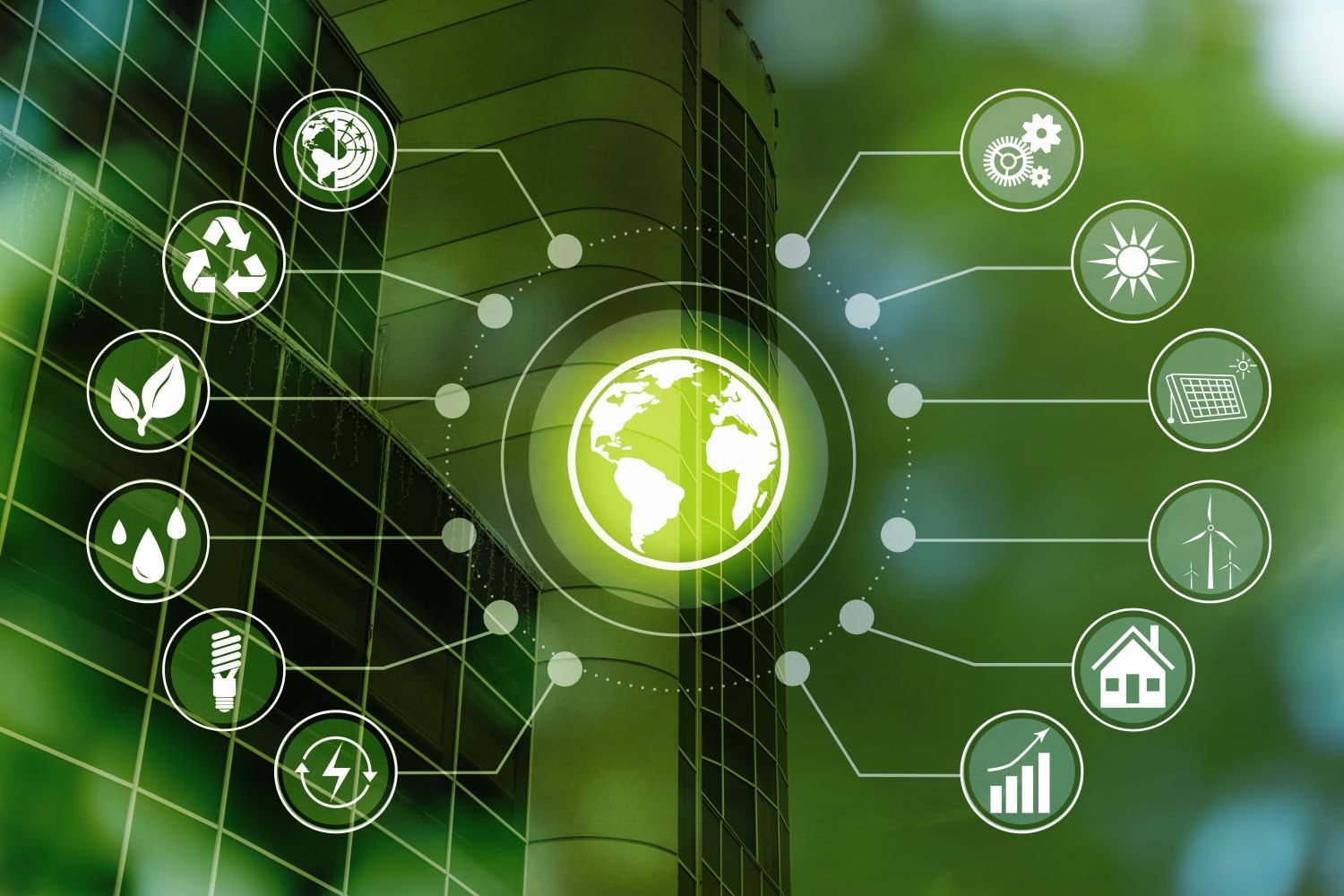Automation can improve sustainability of commercial properties: Five examples from ISE exhibitors

Legislation such as the European Commission’s revised Energy Performance of Buildings Directive has been introduced with a view to improving the energy performance of buildings.
Some of the best tools available to owners/operators for improving the sustainability of commercial buildings in particular make use of AI and automation technologies – but to the uninitiated, it’s not always clear how and where they should be implemented for the best possible outcomes.
Below are the key areas where automation tech can have a significant impact on commercial buildings’ sustainability performance, supported by examples from ISE exhibitors.
Smart HVAC management
AI-managed heating, ventilation, and air conditioning (HVAC) systems can learn from building usage patterns and adjust temperatures based on real-time data inputs, including occupancy, weather conditions, and time of day – reducing unnecessary energy consumption in the process.
Through implementing CoolAutomation’s advanced predictive maintenance solution to centralise previously localised, disparate HVAC units on a single platform, Air Temp Mechanical has been able to make significant energy savings at Miss Porter’s School in Connecticut, USA. The school’s new smart platform identifies energy waste patterns, sets optimal temperatures and controls the operational hours of HVAC systems to maximise energy savings and cut costs.
Lightbulb moments
Automated systems equipped with sensors and controlled by AI algorithms can also control lighting in commercial buildings. They can turn lights on or off depending on building occupancy levels, natural light availability, and specific usage patterns.
By introducing a KNX lighting control system to Hawaikirangi – Whakaata Māori Studios, New Zealand, HDL Automation was able to improve operational efficiency, sustainability and overall user experience at the site. Advanced PIR and LUX sensors were installed, allowing lighting to seamlessly switch on and off based on occupancy and ambient light levels. The studio’s energy consumption was reduced as a result of eliminating unnecessary lighting use.
KNX solutions were also used by Ramseyer AG to improve the energy efficiency of Pflegehouse (a commercial building in Basilea, Switzerland) by incorporating KNX solutions for visualisation and operation of lighting and window treatment control.
Energy flow optimisation
Automation can contribute to reducing emissions by responding to signals from the utility grid – around fluctuations in renewable energy sources, for example. Sensors can detect these changes and adjust a building’s demand during high load periods correspondingly. This can help to improve grid stability, ensuring that energy is distributed effectively.
To further enhance energy flow optimisation, smart power sockets learn when periods of inactivity are due to occur and switch off accordingly. For example, NETIO’s smart sockets can implement ‘night’ and 'weekend’ modes in offices and administrative buildings, disconnecting unused equipment at these times to save energy.
Digital platforms
All the data collection sensors and connectivity in the world can’t function optimally without a central hub to process inputs, analyse them and take the best course of action (ideally in a predictive and proactive manner), while also monitoring resource consumption.
XYTE’s platform has allowed energy provider Schneider Electric to help its customers improve decarbonisation efforts by collecting vital data points and making real-time adjustments to optimise energy performance without affecting building occupant comfort.
The commonality across all of these use cases is more efficient data gathering, cross-referencing and analysis. Improving these processes is how the insights required for proactive, automated decision making can be drawn to improve the sustainability of smart commercial buildings and keep them functioning as efficiently as possible.
Stay informed!
ISE is the world-renowned annual tech show for the AV and systems integration industry, taking place in Barcelona, 4-7 February 2025. It will spotlight the latest AV and smart building solutions from leading manufacturers, including building automation systems, smart lighting, and audio solutions for creating sustainable, accessible and smart public buildings.
To discover the latest solutions and innovations from the smart building suppliers exhibiting at ISE, as well as the hottest industry trends, sign up now for updates.
Don't miss out – join our community today and stay at the forefront of smart building technology.

)
)
)
)
)
)
)
)
)

)
)
)
)
)
)
)
)
)
)
)
)
)
)
)
)
)
![[inst]ALLICHT](https://cdn.asp.events/CLIENT_Integrat_169E7B04_E6F3_39F6_8BE4DB27C54F731E/sites/ise-2026/media/libraries/partners/Inst_Allicht_Logo.png/fit-in/500x500/filters:no_upscale())
)
)
)
)
)
)
)
)
)
)
)
)
)
)
)
)
)
)
![rAVe [PUBS]](https://cdn.asp.events/CLIENT_Integrat_169E7B04_E6F3_39F6_8BE4DB27C54F731E/sites/ise-2026/media/libraries/partners/rAVe-PUBS-Google-Logo.png/fit-in/500x500/filters:no_upscale())
)
)
)
)
)
)
)
)
)
)
)
)
)
)
)
)
)
)

)

)
)
)